The match between Bayer Leverkusen and RB Leipzig was the duel between two top Bundesliga sides. Since both sides started well into the season, the battle was about the question which side would continue their path of success.
In the following tactical analysis, we will explain the reasons for Leipzig’s defensive 4-2-3-1 setup and how Leverkusen still managed to outplay the opposition press using their box midfield tactics.
Lineups and formations
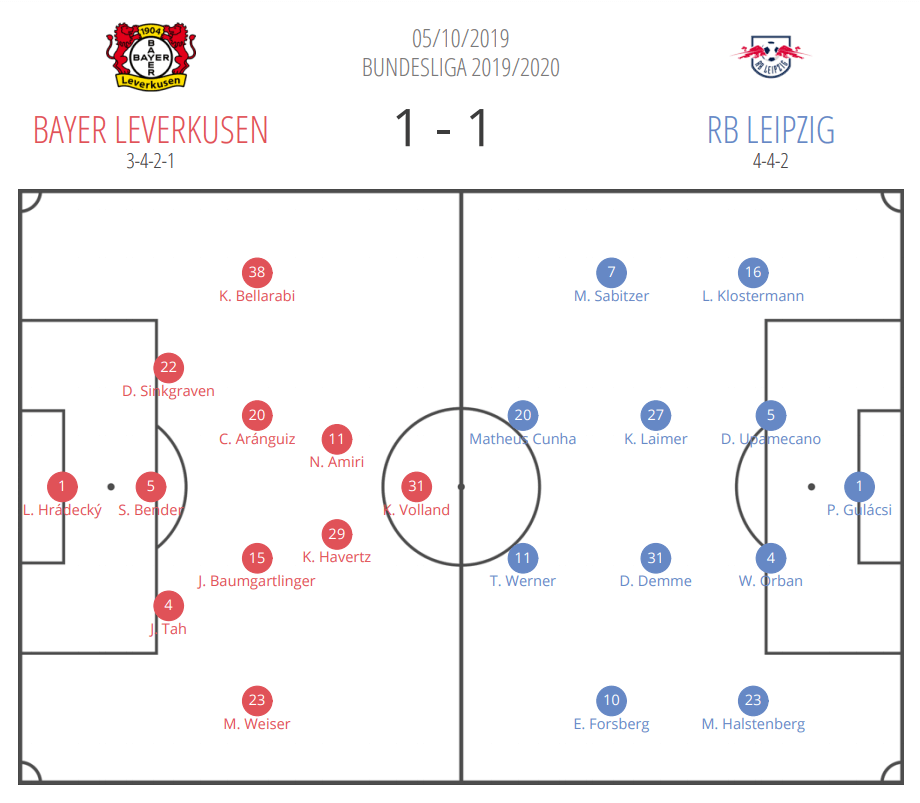
Bayer Leverkusen stuck to their usual 3-4-2-1 formation which saw Kai Havertz and Nadiem Amiri playing behind attacker Kevin Volland. The double-pivot consisted of Julian Baumgartlinger and Charles Aránguiz. Baumgartlinger was mainly focused on creating passing lanes to connect with the back three in build-up while Aránguiz connected midfield and attack in a slightly higher role. All in all, Leverkusen focused on attacking down their right side, where wing-back Mitchell Weiser (#23) moved up the line during possession phases. Karim Bellarabi (#38) on the left side did not receive the ball as often like the pass map below displays.
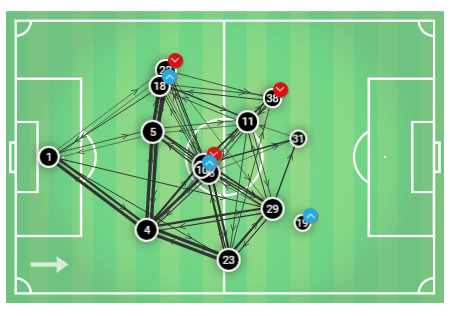
RB Leipzig, on the other hand, played with a 4-4-2 system according to Wyscout. Brazilian attacker Matheus Cunha replaced Yussuf Poulsen and played alongside Timo Werner in the attack. The latter one dropped behind Cunha during the defensive phase though, which resulted in a 4-2-3-1 shape when pressing.
Leipzig’s mid-press in the first half
As already mentioned, Julian Nagelsmann changed the setup of his side to a 4-2-3-1 formation. With this shape, Nagelsmann aimed at guiding Bayer Leverkusen’s build-up towards the flanks where Leipzig pressed near the sideline.
The 4-2-3-1 system was advantageous to Leipzig’s press as it enabled them to shut down the centre of the pitch but also to press in wide areas. The 4-3-1-2 formation would have lent Leipzig enough occupation of central areas as well, but the shape would have lacked width to press on the flanks. The 4-4-2, on the other hand, would have given Leipzig enough width but it would have lacked man-power in central areas to neutralize Leverkusen’s centrally focused 3-4-2-1 system.
Instead of pressing high up the pitch, Nagelsmann wanted his side to execute a mid-press. Often Leipzig’s press was initiated by an arc-like run from attacker Matheus Cunha who guided Leverkusen’s build-up towards one side. Defending in a 4-2-3-1, Leipzig could then mark every player of Leverkusen’s box midfield once the ball was played out wide. Therefore, the ball far winger marked Leverkusen’s ball far pivot.
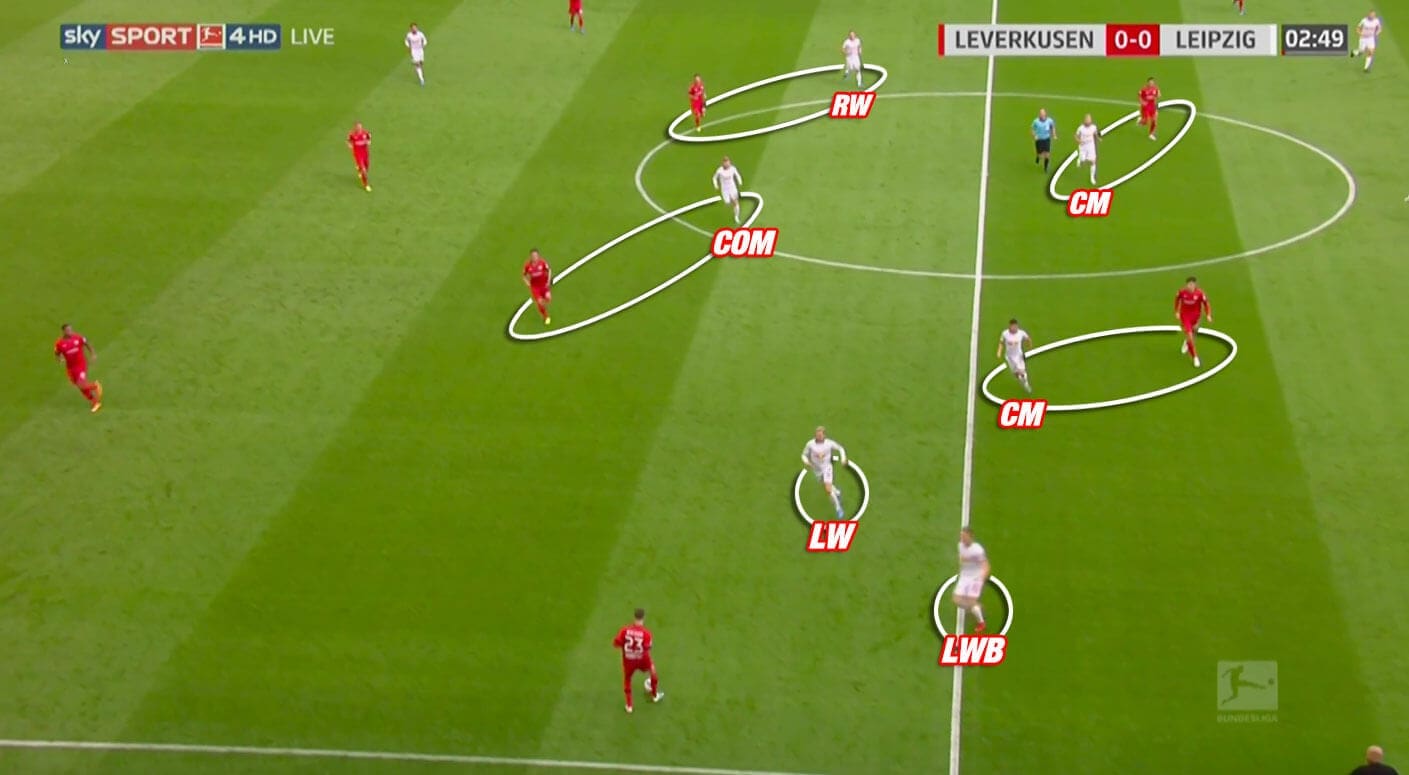
On the wing, Leipzig’s wingers pressed together with their full-backs to create a 2v1 situation. Since Leverkusen only deployed one nominal striker and their advanced midfielders mostly (in the first half) stayed in central areas between the lines, it was no risk that Leipzig’s full-backs sometimes pushed high up the pitch to press the opposition wing-backs. As a consequence, Leipzig’s centre-backs still remained superior in numbers against the lone attacker of Leverkusen.
Leverkusen’s defensive mistakes
Leverkusen pressed extremely aggressively and with high full-backs. They even moved out to press Leipzig’s full-backs. But that also left only three defenders in the back. And as a result of their high press, Leverkusen offered space behind the backline which turned out to be dangerous against Leipzig’s pacy attackers.
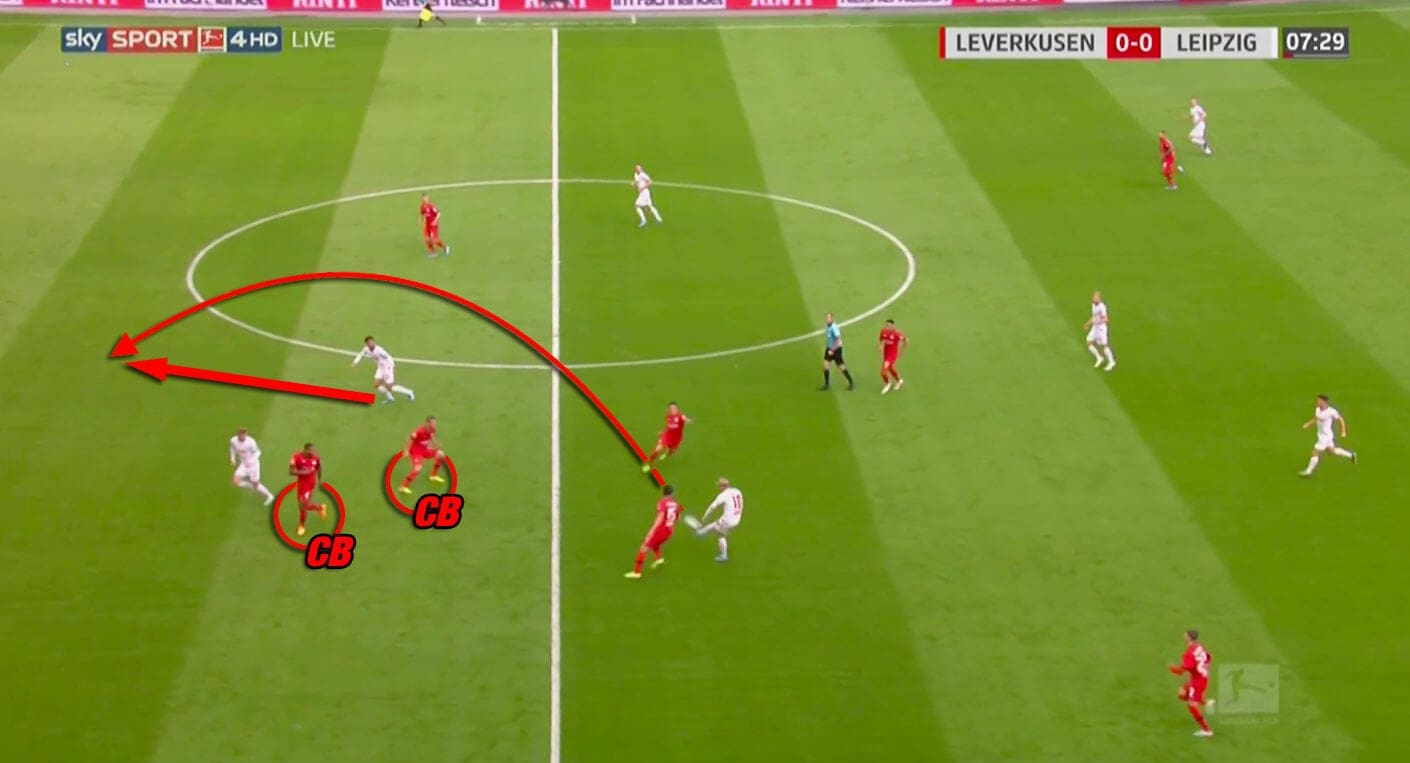
And since the positioning of the centre-back pairing subpar at times, Leipzig were given the opportunity to threaten the opposition goal after dangerous through passes. Central defenders Jonathan Tah and Sven Bender often missed defensive staggering. Either the horizontal distance between both was too big (image below) or the ball far defender was positioned too high (image above) so that both defenders could be overplayed with a simple ball behind the backline.
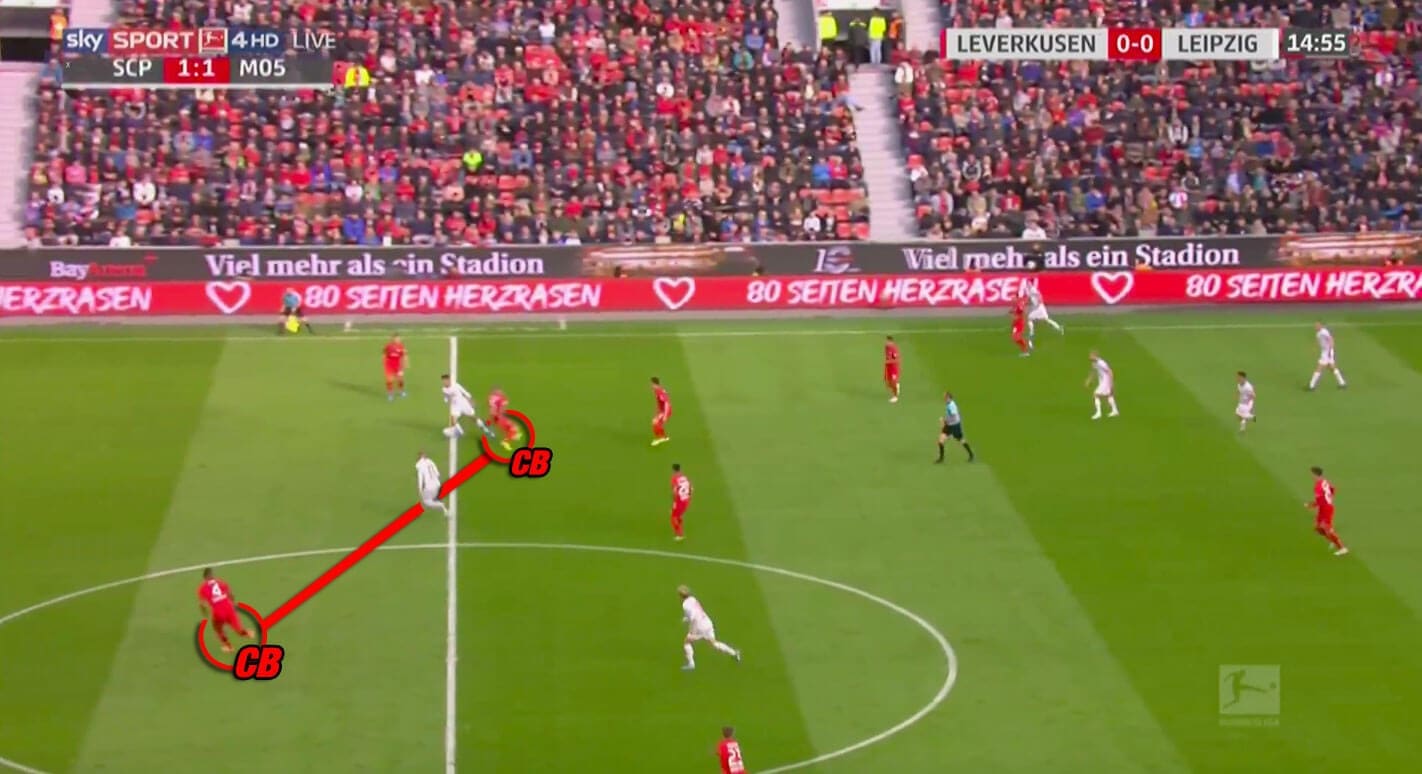
Against the fast strikers of Leipzig, these mistakes obviously ended in good scoring opportunities. The only good thing about Leverkusen’s rest defence was how they tracked back Leipzig’s attackers.
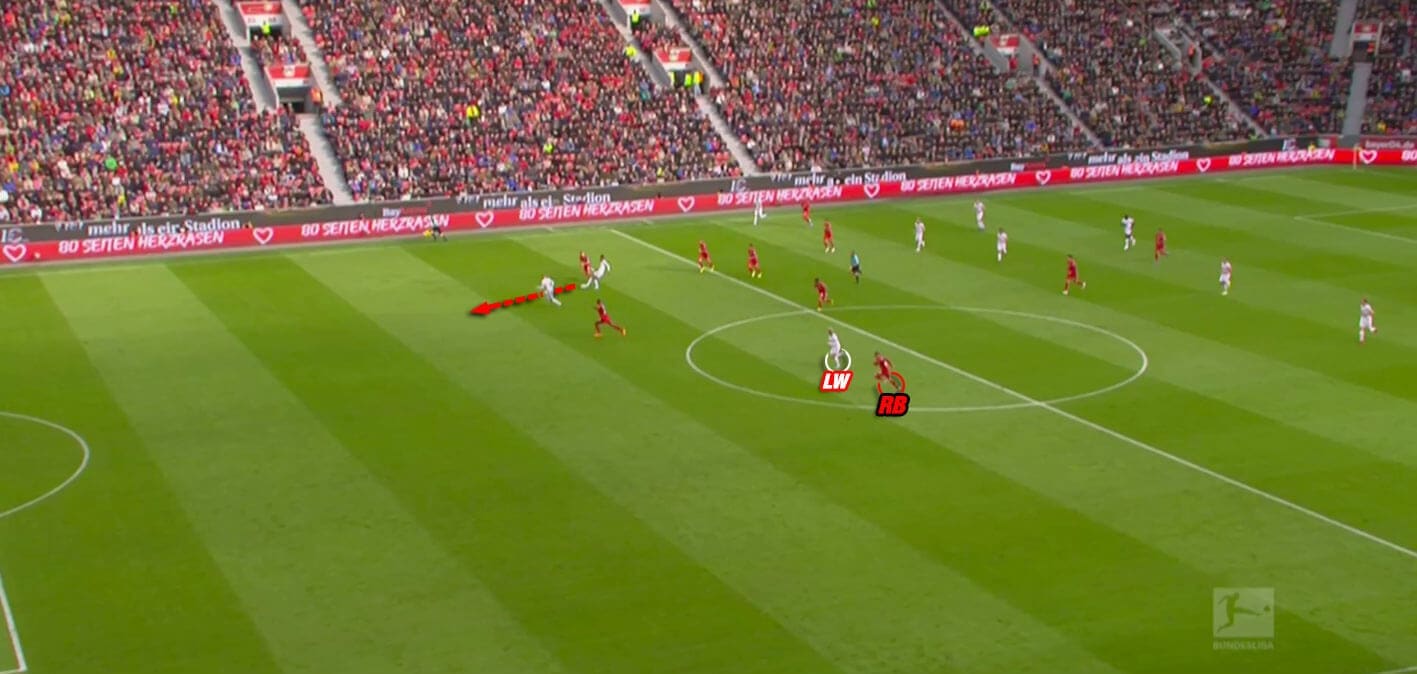
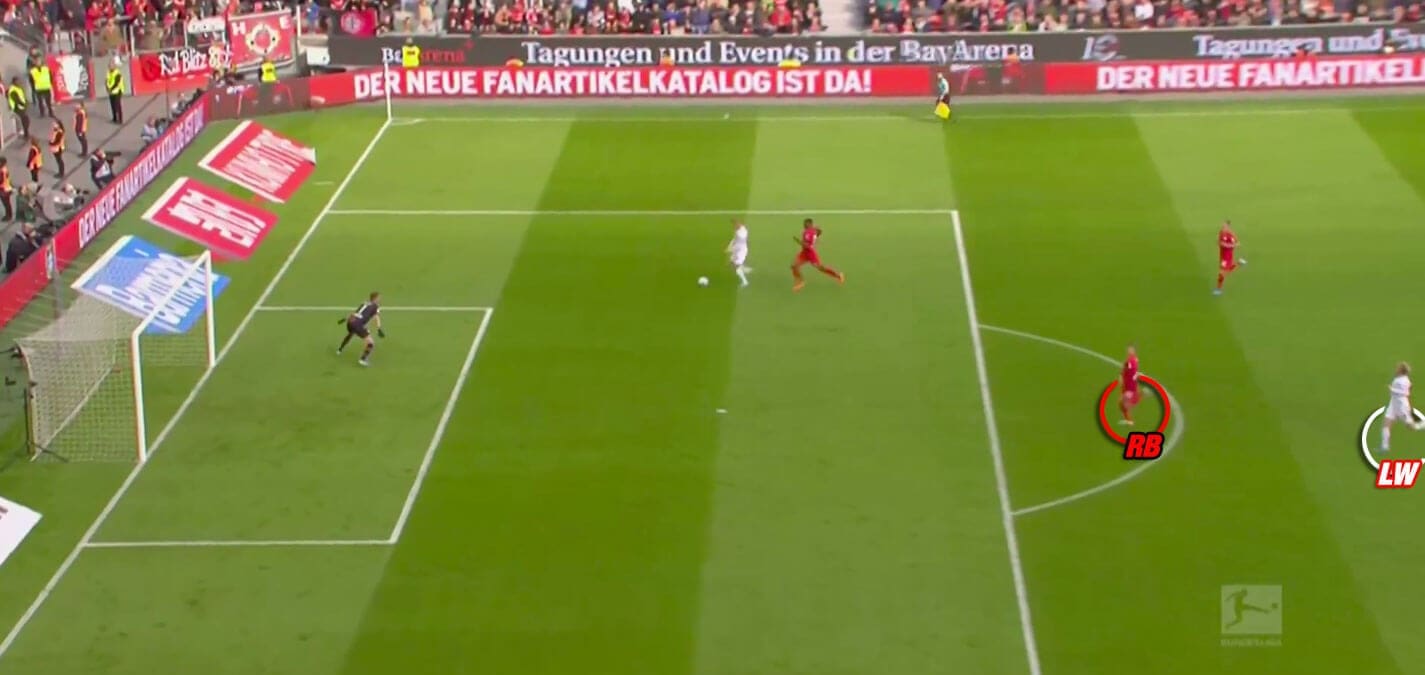
Therewith, they forced the ball-carrier to shoot and prevented them from scoring a simple tap-in goal. In addition to that, Nagelsmann’s side was too ineffective and, in the first half, did not convert their chances into goals.
Leverkusen’s attacking play
To create their typical 3-2-4-1 shape in possession, right-back Mitchell Weiser moved up the line and Kai Havertz tucked inside. Left-winger Karim Bellarabi, on the other side of the pitch, stayed wide and acted as the left wing-back during the attacking phase.
During the early build-up phase, defensive midfielder Julian Baumgartlinger positioned himself in deep areas to collect the ball. Moving outside of the strikers’ cover-shadow, Leverkusen’s central defenders could pass the ball to the Austrian.
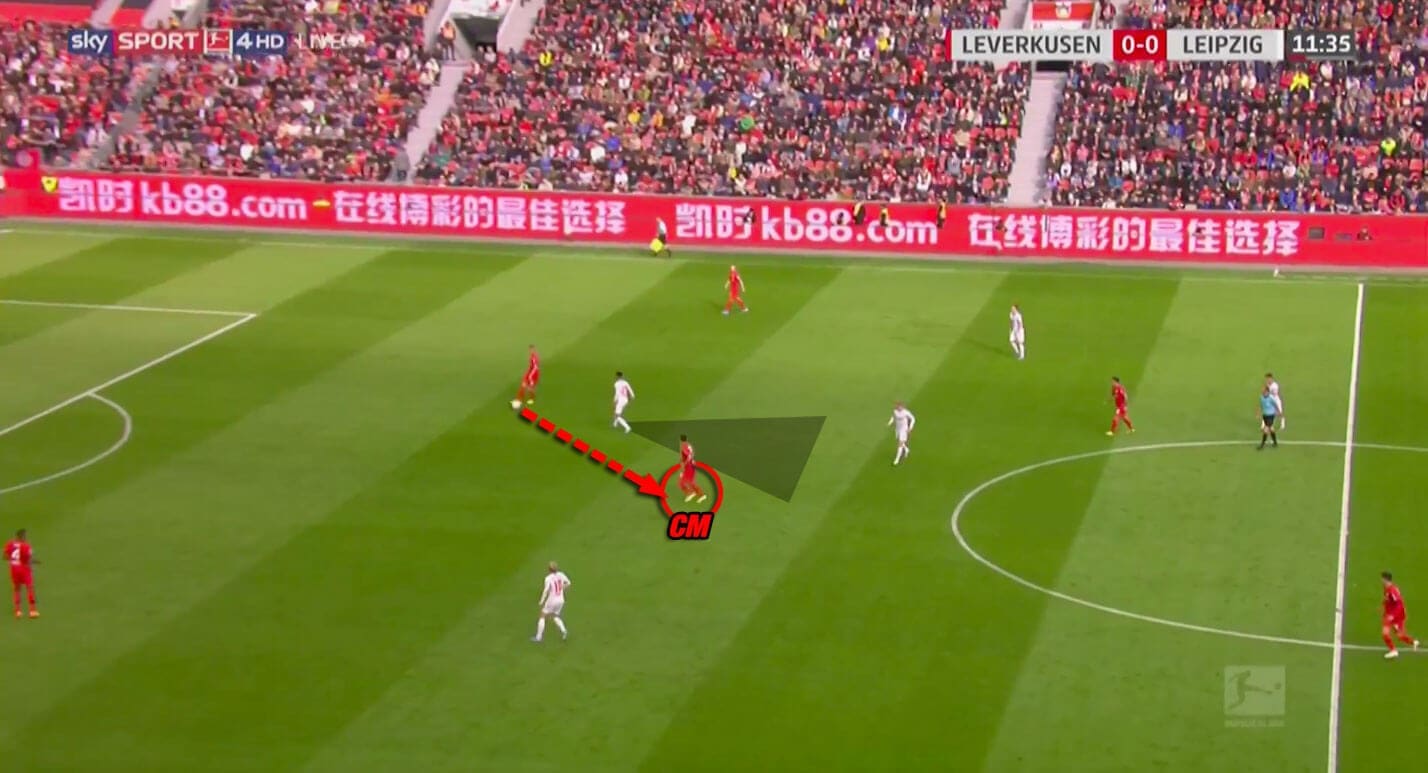
From the area between the opposition midfield and attacker, the central midfielder pulled the strings during Leverkusen’s deep build-up phase. And in some situations, Leverkusen could then take advantage of their numerical superiority in the centre created with their box midfield.
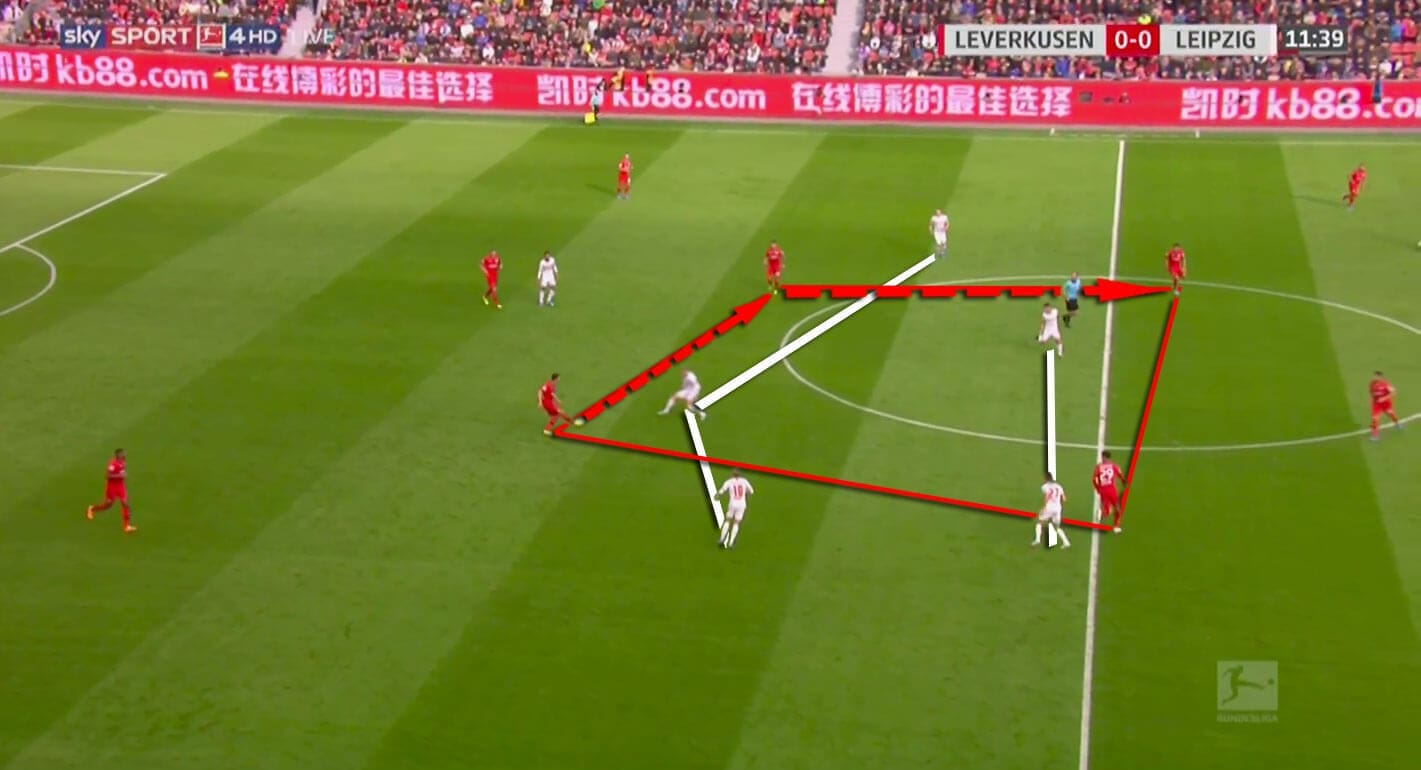
Leipzig’s midfielders acted very man-oriented. Such a man-oriented way of defending enables the opposition to create space easily. And in situations when Leipzig missed to apply pressure on the ball-carrier, Leverkusen exploited this. While the ball near advanced midfielder would move outside to create a diagonal passing lane, striker Kevin Volland would drop into the created space.
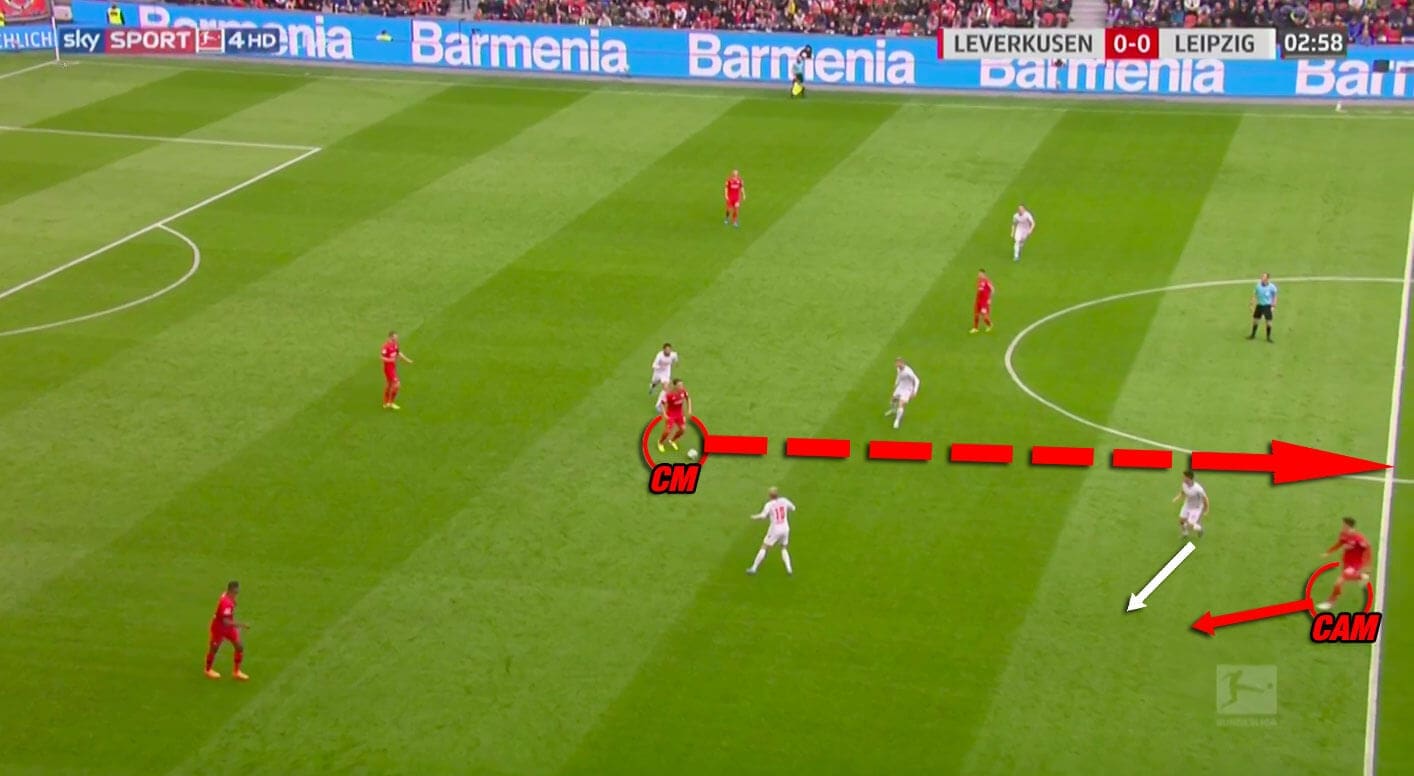
This space was only created since Leipzig’s central midfielders followed the movement of their direct opponents. And as Leverkusen’s advanced midfielders moved away from each other, Volland was offered enough space in-between to drop into.
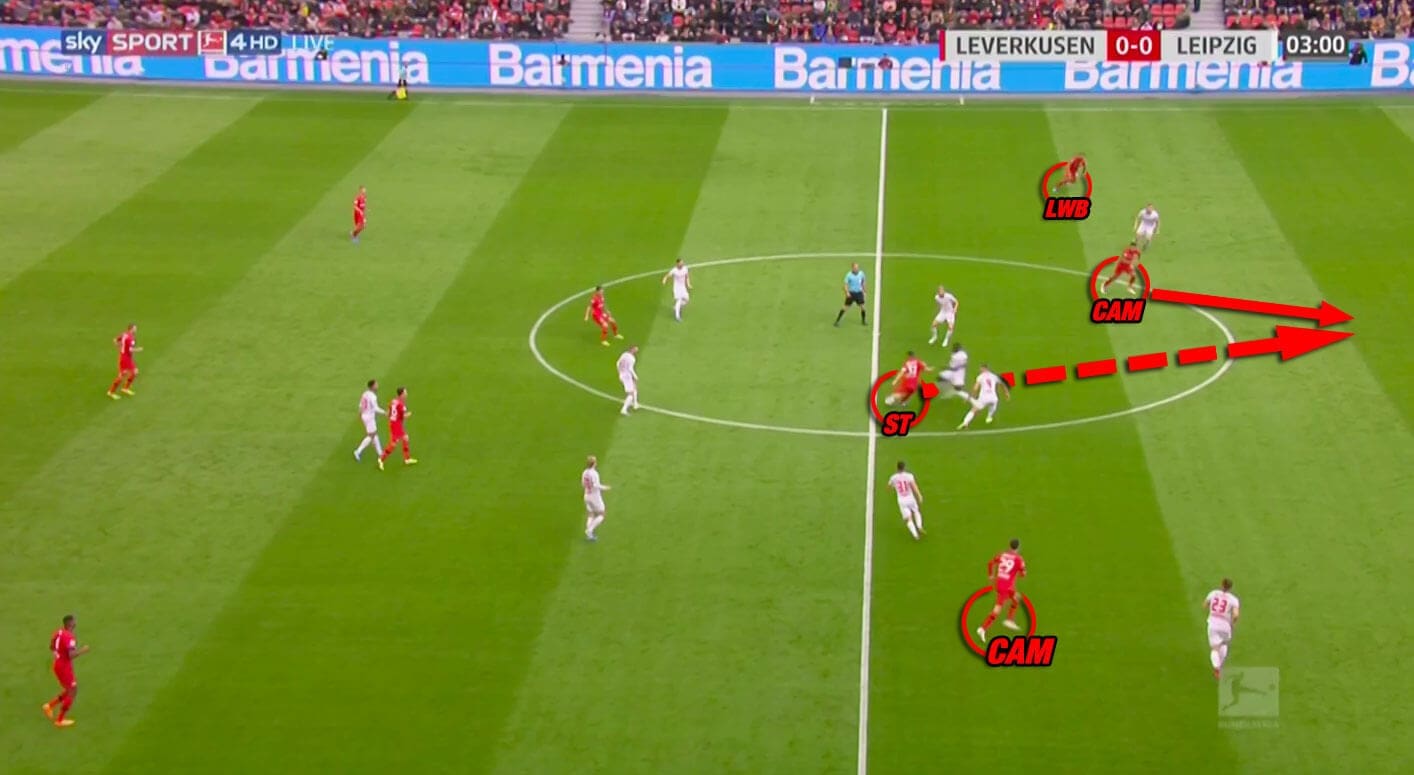
Whenever a Leverkusen midfielder could turn in front of Leipzig’s backline, another player would immediately start a deep run to threaten the space in behind. That way, Leverkusen created their first opportunity of the game displayed in the picture above.
Especially within the final third, their deep runs were threatening. With chipped balls behind the last line of defence, Bosz’s side played into the penalty area. With overloads in central areas, Leverkusen occupied Leipzig in the centre. Their wing-backs then started diagonal runs from wide areas into the back of Leipzig’s full-backs.
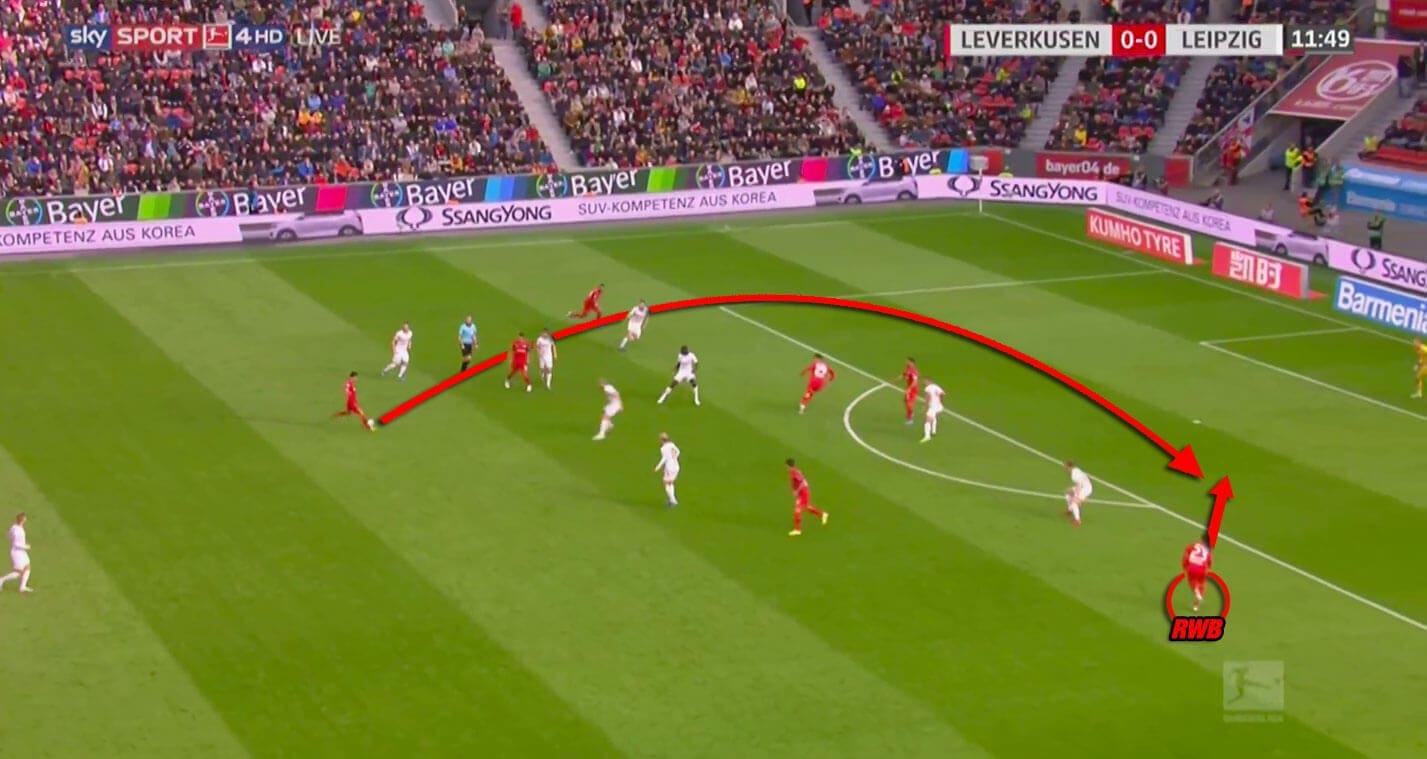
However, Leverkusen rarely utilised the space since Leipzig’s midfielders and defenders made use of their advantage in pace and quickly pressed any player which could receive in areas between the lines.
Leverkusen’s leading goal in the second half also displayed how to break a man-oriented defence. In this case, it was a rotational movement that helped Bosz’s team to outplay Leipzig’s press. Advanced midfielder Havertz positioned himself on the right-wing.
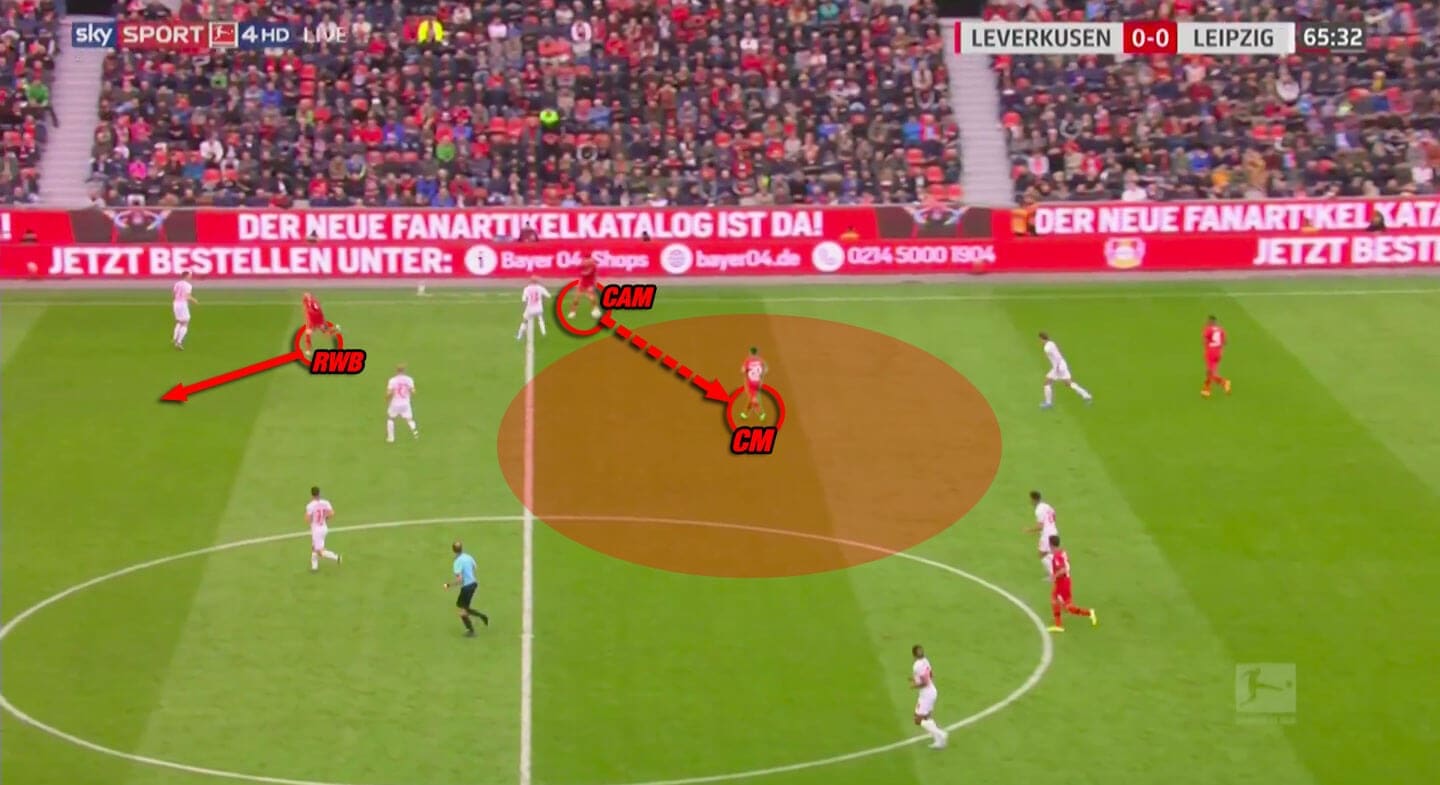
As the German midfielder received the ball, right wing-back Weiser moved into the half-space. And After a half-space combination with Weiser, followed by a deep run by central midfielder Aránguiz, Leverkusen scored the leading goal.
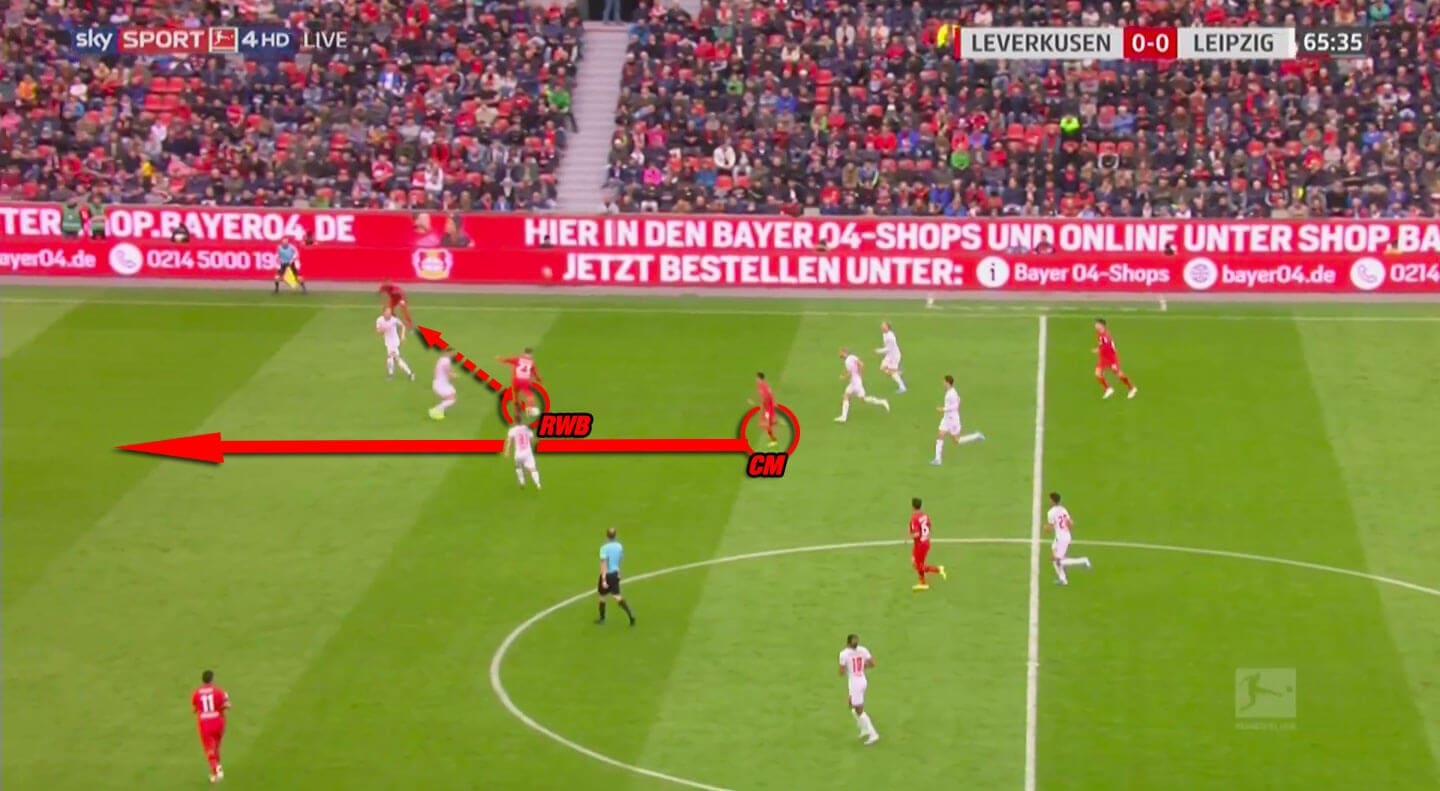
Leipzig’s more aggressive press
After conceding the first goal of the game, RB Leipzig began to press Leverkusen more aggressively.
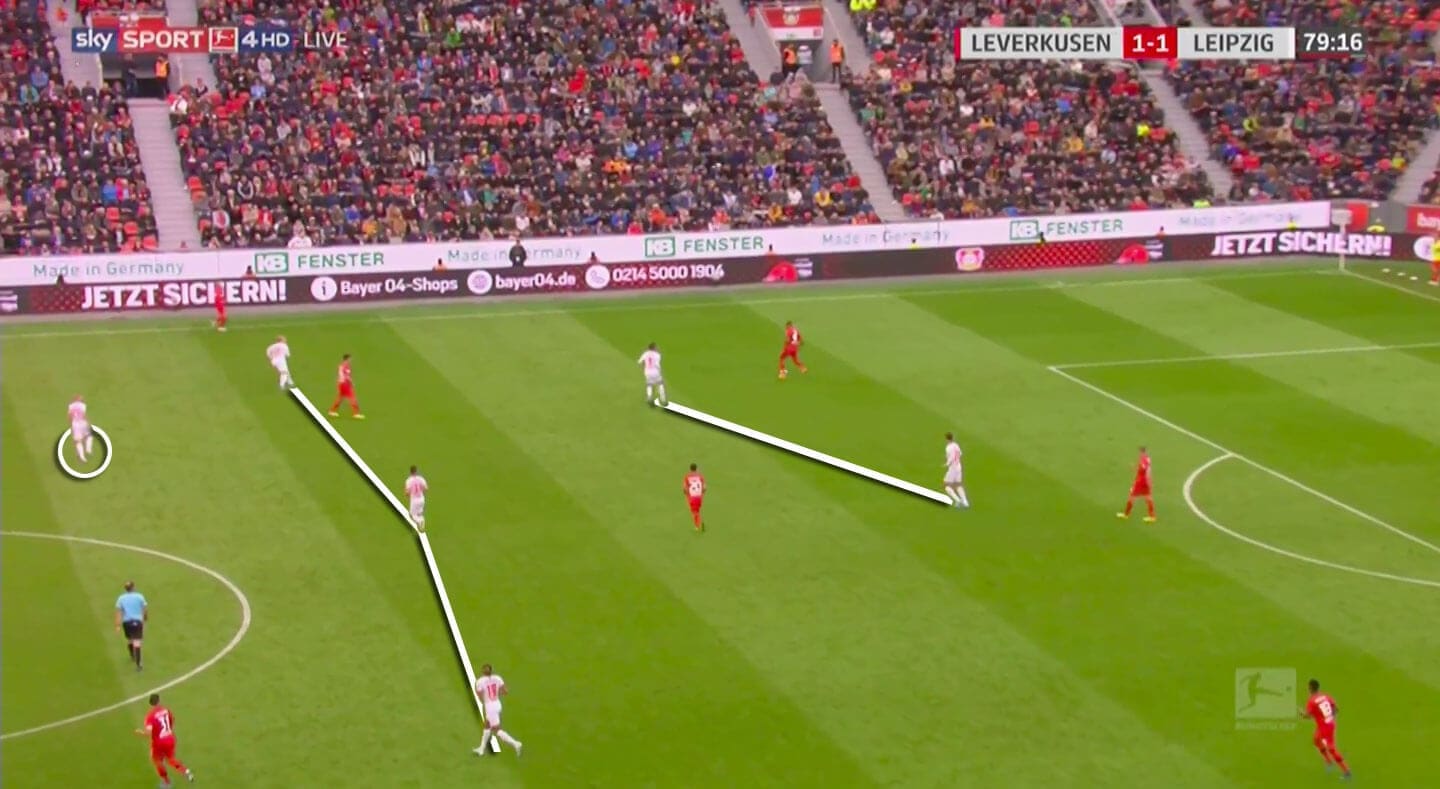
By decreasing the time that Leverkusen’s build-up players had with the ball, Leipzig could force them to make mistakes.
Moreover, Leipzig successfully dominated central areas in possession again. By overloading the space between the lines and therewith attracting the opposition defenders and midfielders, Leipzig created space behind the backline and allowed the ball-carrier enough time on the ball to look for the right pass into the final third.
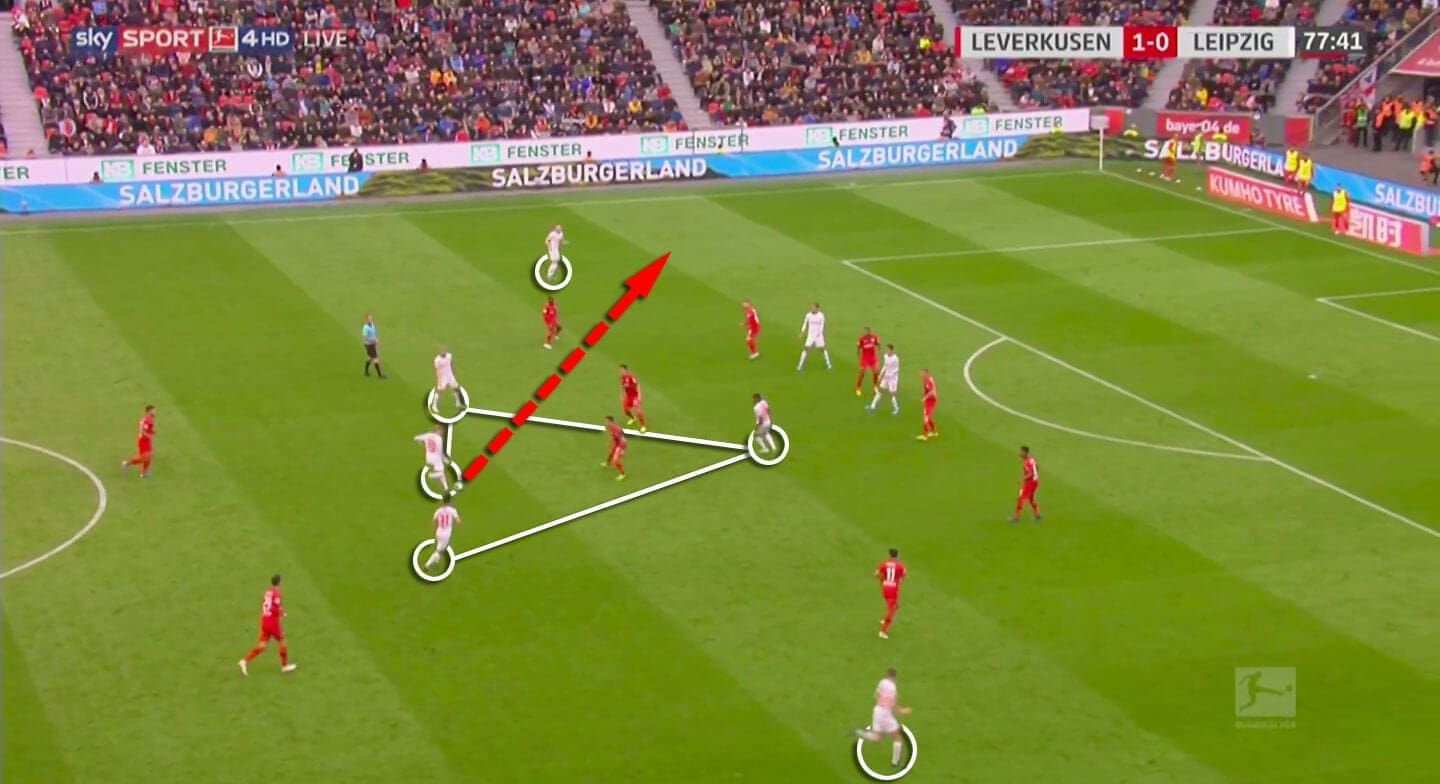
That way, Leipzig were capable of at least getting one point out of a strange match that was dominated by Leverkusen most of the time while Leipzig had the better chances.
Conclusion
Despite their respectable possession phase which even posed problems for a well-structured Leipzig press, Leverkusen committed too many mistakes within their defensive department as our analysis showed. Leipzig created huge scoring opportunities but failed to take advantage of that. One could, therefore, conclude that a draw is a fair result as Bosz’s side were superior in terms of the possession phases but Nagelsmann’s team possessed a better defensive structure.

If you love tactical analysis, then you’ll love the digital magazines from totalfootballanalysis.com – a guaranteed 100+ pages of pure tactical analysis covering topics from the Premier League, Serie A, La Liga, Bundesliga and many, many more. Buy your copy of the September issue for just ₤4.99 here





Comments